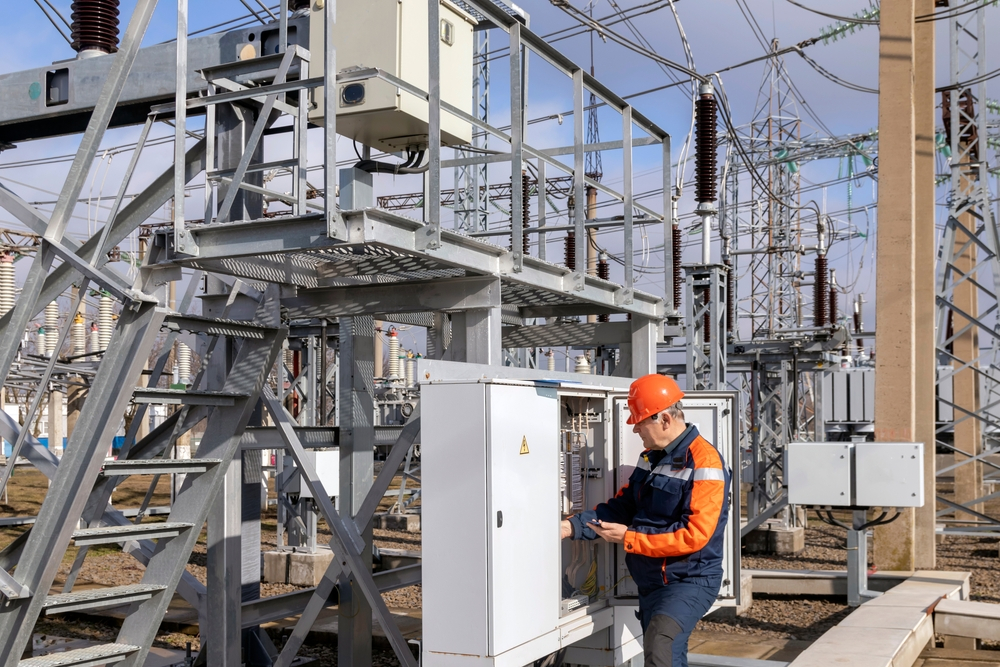Roar Solutions Can Be Fun For Everyone
Roar Solutions Can Be Fun For Everyone
Blog Article
An Unbiased View of Roar Solutions
Table of ContentsRoar Solutions Can Be Fun For EveryoneWhat Does Roar Solutions Do?Not known Facts About Roar Solutions
In order to safeguard setups from a potential surge a technique of analysing and identifying a potentially harmful area is required. The function of this is to make certain the proper choice and installation of tools to ultimately protect against a surge and to guarantee safety of life.
(https://dc-washington.cataloxy.us/firms/training.roarsolution.com.au.htm)
No devices needs to be mounted where the surface temperature of the devices is better than the ignition temperature level of the offered threat. Below are some common dust harmful and their minimum ignition temperature. Coal Dirt 380C 225C Polythene 420C (thaws) Methyl Cellulose 420C 320C Starch 460C 435C Flour 490C 340C Sugar 490C 460C Grain Dirt 510C 300C Phenolic Resin 530C > 450C Aluminium 590C > 450C PVC 700C > 450C Soot 810C 570C The probability of the threat being existing in a focus high adequate to create an ignition will certainly differ from area to place.
In order to categorize this risk a setup is split right into locations of threat relying on the quantity of time the dangerous is present. These locations are described as Areas. For gases and vapours and dirts and fibres there are three zones. Zone 0 Zone 20 An unsafe atmosphere is very likely to be existing and may exist for extended periods of time (> 1000 hours each year) or even continuously Zone 1 Area 21 A harmful ambience is feasible but unlikely to be present for extended periods of time (> 10 450 C [842 F] A category of T6 indicates the minimum ignition temperature level is > 85 C [185 F] Dangerous area electric equipment possibly created for use in higher ambient temperatures. This would showed on the ranking plate e.g. EExe II C T3 Ta + 60C( This means at 60C ambient T3 will not be gone beyond) T1 T1, T2, T3, T4, T5, T6 T2 T2, T3, T4, T5, T6 T3 T3, T4, T5, T6 T4 T4, T5, T6 T5 T5, T6 T6 T6 A T Class rating of T1 suggests the optimum surface temperature level generated by the tool at 40 C is 450 C. Presuming the associated T Course and Temperature ranking for the devices are ideal for the location, you can always utilize a tool with a much more stringent Department ranking than required for the location. There isn't a clear answer to this question. It really does rely on the sort of equipment and what repair work require to be accomplished. Tools with certain test procedures that can't be performed in the field in order to achieve/maintain 3rd party ranking. Need to come back to the manufacturing facility if it is before the devices's solution. Field Fixing By Authorised Employee: Complex screening might not be required nevertheless details procedures might need to be complied with in order for the equipment to keep its 3rd party rating. Authorized personnel should be employed to carry out the job appropriately Repair need to be a like for like substitute. New component need to be considered as a direct substitute calling for no unique screening of the equipment after the repair work is full. Each piece of devices with a hazardous rating ought to be examined individually. These are outlined at a high degree listed below, but also for even more detailed info, please refer directly to the guidelines.
Indicators on Roar Solutions You Need To Know
The devices register is a detailed data source of devices records that consists of a minimum set of areas to determine each product's location, technological specifications, Ex-spouse classification, age, and ecological data. This details is critical for tracking and taking care of the equipment successfully within unsafe areas. On the other hand, for regular or RBI sampling evaluations, the grade will be a mix of Comprehensive and Close examinations. The ratio of Thorough to Shut examinations will be determined by the Devices Danger, which is assessed based on ignition danger (the chance of a source of ignition versus the probability of a combustible ambience )and the dangerous location category
( Zone 0, 1, or 2). This variation will additionally affect the resourcing requirements for work prep work. As soon as Whole lots are specified, you can establish tasting strategies based upon the example dimension of each Lot, which refers to the number of random tools items to be checked. To establish the required sample size, two facets require to be evaluated: the size of the Lot and the classification of inspection, which indicates the level of effort that ought to be applied( lowered, regular, or raised )to the examination of the Lot. By combining the category of assessment with the Whole lot dimension, you can after that develop the appropriate rejection standards for a sample, indicating the permitted variety of damaged products located within that sample. For even more information on this process, please describe the Energy Institute Guidelines. The IEC 60079 common recommends that the optimum period between assessments must not exceed three years. EEHA inspections will certainly additionally be performed outside of RBI campaigns as part of scheduled upkeep and devices overhauls or repair work. These evaluations can be credited toward the RBI sample dimensions within the influenced Lots. EEHA inspections are performed to recognize mistakes in electric equipment. A heavy scoring system is important, as over at this website a single item of equipment might have several faults, each with varying levels of ignition threat. If the consolidated score of both examinations is much less than twice the fault rating, the Great deal is considered appropriate. If the Great deal is still taken into consideration undesirable, it has to go through a complete assessment or validation, which might cause more stringent evaluation methods. Accepted Whole lot: The reasons of any kind of faults are identified. If an usual failure mode is found, extra tools may require examination and repair service. Mistakes are categorized by severity( Security, Honesty, Home cleaning ), guaranteeing that immediate problems are assessed and resolved without delay to alleviate any effect on safety and security or operations. The EEHA data source need to track and record the lifecycle of faults in addition to the corrective activities taken. Executing a robust Risk-Based Evaluation( RBI )strategy is vital for making certain compliance and safety and security in managing Electrical Devices in Hazardous Locations( EEHA) (electrical refresher course). Automated Mistake Scoring and Lifecycle Monitoring: Easily handle faults and track their lifecycle to improve examination accuracy. The intro of this assistance for risk-based assessment even more strengthens Inspectivity's position as a best-in-class option for governing compliance, in addition to for any kind of asset-centric inspection usage instance. If you have an interest in learning a lot more, we invite you to ask for a presentation and find exactly how our remedy can change your EEHA monitoring processes.
The Greatest Guide To Roar Solutions

In terms of eruptive risk, a harmful location is an atmosphere in which an explosive environment is existing (or may be anticipated to be present) in quantities that call for special safety measures for the building, installment and use of devices. hazardous area electrical course. In this short article we explore the obstacles dealt with in the office, the risk control steps, and the required competencies to function securely
These substances can, in specific problems, form explosive atmospheres and these can have major and tragic effects. Most of us are acquainted with the fire triangular eliminate any kind of one of the three elements and the fire can not happen, but what does this mean in the context of harmful locations?
In the majority of instances, we can do little about the levels of oxygen airborne, however we can have substantial influence on sources of ignition, for instance electrical tools. Unsafe areas are recorded on the unsafe location category drawing and are identified on-site by the triangular "EX LOVER" indication. Here, amongst other crucial information, areas are divided right into three types depending on the risk, the probability and period that an eruptive ambience will exist; Zone 0 or 20 is regarded the most unsafe and Area 2 or 22 is deemed the least.
Report this page